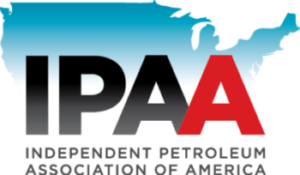Jul 30, 2021 IPAA Comments – Reconsideration OOOOa-111d Guidelines (Re: Reducing Emissions of Methane and Other Air Pollutants from the Oil and Natural Gas Sector: Request for Information)
“For over the past eleven years IPAA has been actively engaged in working with the EPA to promulgate NSPS for the oil and natural gas sector that are cost-effective, reasonable and justified under the CAA. IPAA’s message has been clear and consistent: EPA’s “one-size-fits all” approach to regulating the oil and natural gas industry is inappropriate and disproportionally impacts conventional operations, low production wells, and small businesses. IPAA has advocated for cost effective management of industry air emissions – Volatile Organic Compounds (VOC) and methane – and has a long history of participation in voluntary programs that are cost-effective. Unlike many industries, the oil and natural gas industry’s “product” is essentially the same “pollutant” that EPA has sought to control. The oil and natural gas industry has a pure economic incentive to prevent every molecule of “pollutant” from escaping to the atmosphere. What IPAA has consistently sought is cost-effective regulations justified by the authority entrusted to the EPA by the Clean Air Act (CAA), tailored to the unique aspects of the industry.
“The deliberations regarding the structure of federal regulation of oil and natural gas production air emissions continue to evolve. Congress’ recent action to pass a Congressional Review Act (CRA) resolution to rescind EPA regulations that changed the regulatory target to Volatile Organic Compounds (VOC) largely settles a recurring question in the regulatory structure. Oil and natural gas production regulations will now be largely directed to manage emissions using methane as the targeted emissions. Focusing on methane emissions is consistent with Executive Order 13990, “Protecting Public Health and the Environment and Restoring Science to Tackle the Climate Crisis.” This Executive Order directs the Agency to reduce emissions of methane and other air pollutants from new and existing sources in the oil and natural gas sector. Two predominant elements of those efforts will be reconsideration of technical changes to Subpart OOOOa (Oil and Gas Sector: Emissions Standards for New, Reconstructed, and Modified Sources) and the development of emissions guidelines under Section 111(d) of the CAA.
“The debate over the choice of VOC or methane as the regulatory target has been intense and acrimonious, sometimes hyperbolic. Much of the tension related to the implications of the choice on the regulation of existing oil and natural gas wellsites. That debate is now over. The next steps must turn to the development of cost effective regulations. …”








